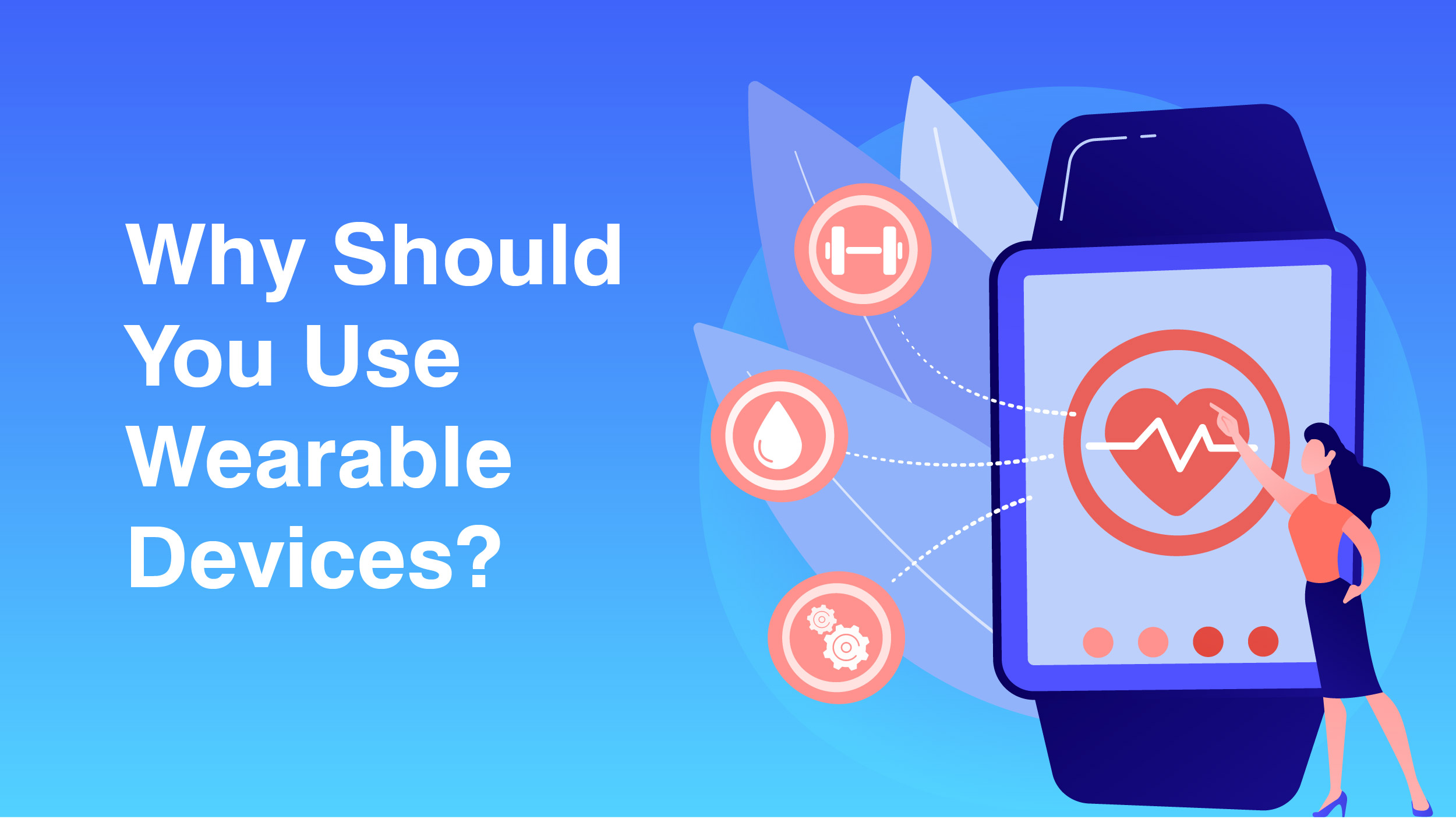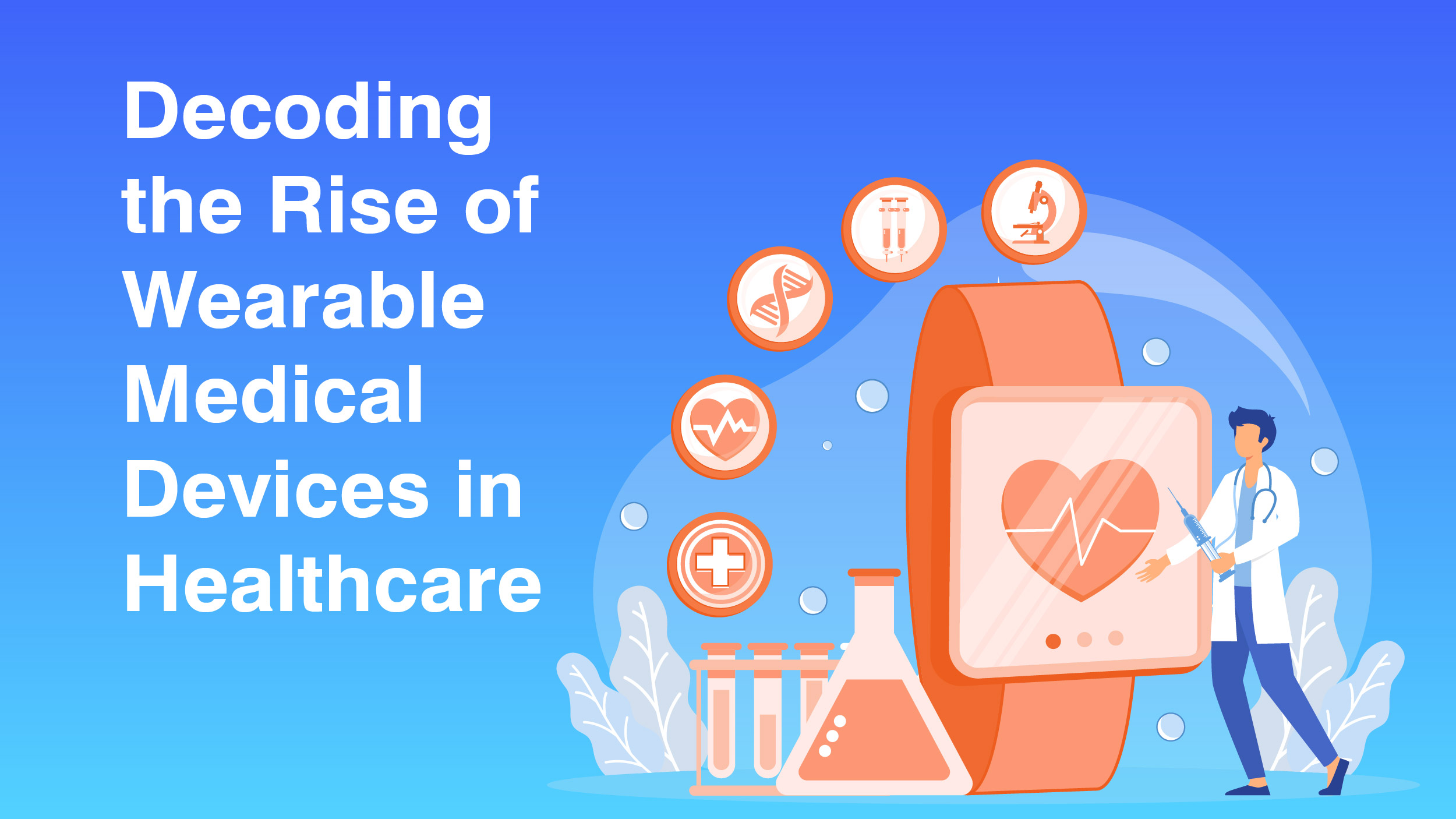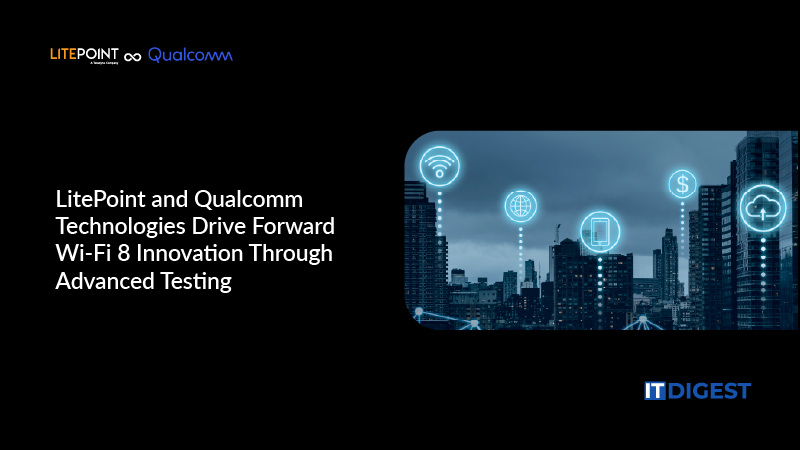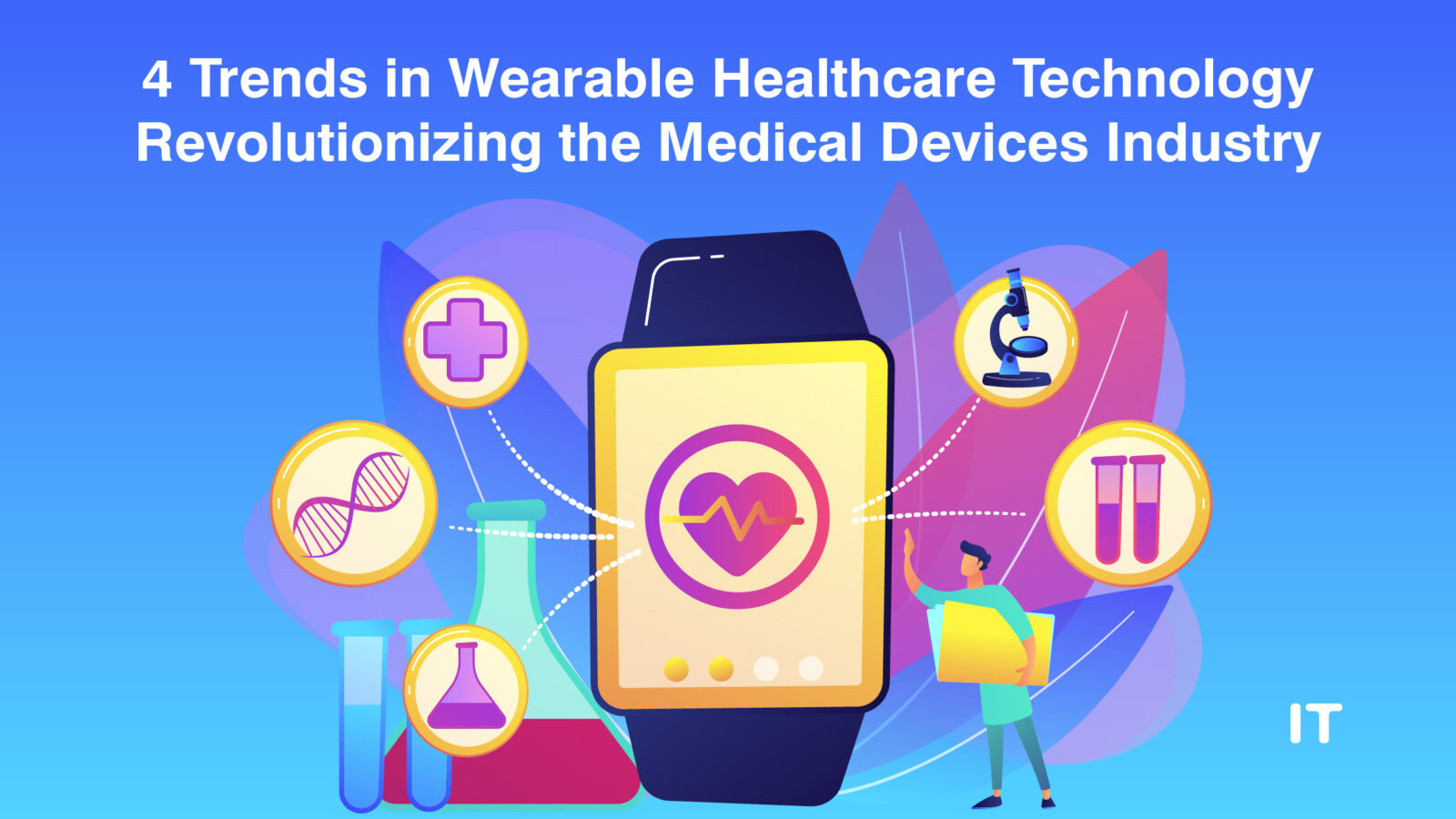It is hardly surprising that wearable medical devices are starting to acquire traction as wearable technology does.
There are numerous possible uses for wearable medical technology in the healthcare sector. Wearable technology can enhance patient care, remotely monitor individual health data, and potentially stop patient deterioration or health issues in their tracks. Let’s discuss the overview, advantages, and top four trends in wearable healthcare technology in this post.
What are Wearable Medical Devices?
Wearable medical devices are smart devices that you wear directly on your body to track and monitor important health signs, like your heart rate, blood pressure, and oxygen levels. They can help improve patient care by remotely tracking personal health data and even preventing health issues before they arise. Some examples of wearable medical devices are blood pressure monitors that you can wear, patches that measure electrocardiograms (ECG), gloves with sensors, and fitness trackers. Healthcare providers around the globe use these devices to enhance patient monitoring and provide more personalized and precise healthcare plans.
Why Should You Use Wearable Devices?

Monitoring your health is crucial, and using a healthcare monitoring device can be a time-saving solution. These devices automatically track important information, providing convenience and ease of use. Some devices can even relay this information directly to your healthcare provider for you.
Wearable healthcare technology has made significant advancements in accurately measuring heart rate, sleep patterns, and activity level. These devices can efficiently store the data on a phone or smartwatch for easy access. However, there are still limitations to what this technology can accurately measure, such as blood pressure. While smartwatches currently cannot monitor blood pressure directly, many devices have the capability to connect to appropriate medical equipment and upload the data from these devices into a smartphone for further analysis.
Also Read: mHealth: The Idea, Benefits and Challenges of Modern Healthcare Technology
Ensuring accurate health information is crucial for wearable medical technology devices. It is important to prioritize the use of high-quality medical technology to optimize the performance of these devices. This explains why over 1 billion people utilize wearable technology.
Decoding the Rise of Wearable Medical Devices in Healthcare
 Undoubtedly, the healthcare sector is witnessing a surging demand for the integration of wearable medical devices. Numerous companies have already begun to embrace this technology, implementing it in diverse and innovative ways.
Undoubtedly, the healthcare sector is witnessing a surging demand for the integration of wearable medical devices. Numerous companies have already begun to embrace this technology, implementing it in diverse and innovative ways.
Certain hospitals have adopted wearable sensors to monitor a wide array of patient data, including blood oxygen saturation, calorie expenditure, sleep quality, sleep patterns, body temperature, and respiratory rate. Meanwhile, others leverage medical wearables to closely track and manage patient recovery, particularly post-surgery.
The potential applications of wearable technology within healthcare are virtually boundless. As this technology continues to advance, we can anticipate a continual stream of remarkable innovations transforming the healthcare landscape.
Top 4 Trends in Wearable Healthcare Technology
Here are the top 4 trends in wearable healthcare technology all set to revolutionize the medical devices industry in 2022 and in the future.
- Smartwatch – Fitness Watch
A smartwatch is a multifunctional device connected to the user’s smartphone. It allows a user to perform normal tasks that they usually perform on their smartphones and also provides health-tracking benefits. With a smartwatch, users can not only read notifications or make phone calls but also enjoy the exercise- and health-tracking benefits of fitness trackers.
The fact that consumers are more inclined to experience smartphone-like features in a watch is the biggest contributor to the increased use of smartwatches. However other factors such as health and fitness information accessibility, technological improvements, and modular aesthetics are also responsible for the uptake in the adoption of smartwatches.
- Wearable ECG and Blood Pressure Monitors
Wearable ECG and Blood Pressure monitors are similar to a smartwatch but their features and purpose are completely different. Both wearable ECG and Blood Pressure monitors are on the cutting edge of consumer electronics.
The wearable ECG monitors can measure electrocardiograms (ECG) and send the reading to the consumer’s doctor. On the other hand, a wearable Blood Pressure monitor can measure blood pressure as well as daily activities like the number of steps walked, distance traveled, and the number of calories burnt.
- Biosensors
Biosensors are one of the most promising wearable medical devices. These are quite different from regular wrist trackers and smartwatches. Biosensors are made for screening infectious diseases and for their early detection, to treat chronic diseases, health management, and to keep a tab on the overall well-being of the user.
Biosensor technology has the ability to detect diseases and it can also track how a patient’s body is responding to care. The demand for biosensor applications in the medical diagnostic field involves drug discovery, cholesterol monitoring, pregnancy testing, etc. Wearable biosensors hold promising growth in the near future.
- Skin Patches
As the world is embracing digital transformation on a huge scale the technological capabilities of devices have improved immensely. Devices that were once simple and had limited capabilities are now more evolved and can perform more complex functions. Today’s wearable healthcare technology can perform complex tasks while being thin and flexible at the same time. This highlights the emergence of skin adhesive patches and their increased popularity.
Skin patches are wearable products that are attached to the skin. Skin patches are used for routine medical purposes. There are sensors, actuators, and processors that allow a skin patch to be connected and “smart”. The use of skin adhesive patches is broadening and they are being actively incorporated into smart technologies that connect to IoT devices.
Winding Up
As wearable tech becomes more common in our daily lives, it’s making a significant positive impact in healthcare. The ultimate goal is a world where everyone has a personal health monitor, enabling better self-health management and giving healthcare professionals real-time insights for early diagnosis and more effective treatment.































